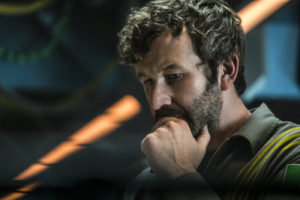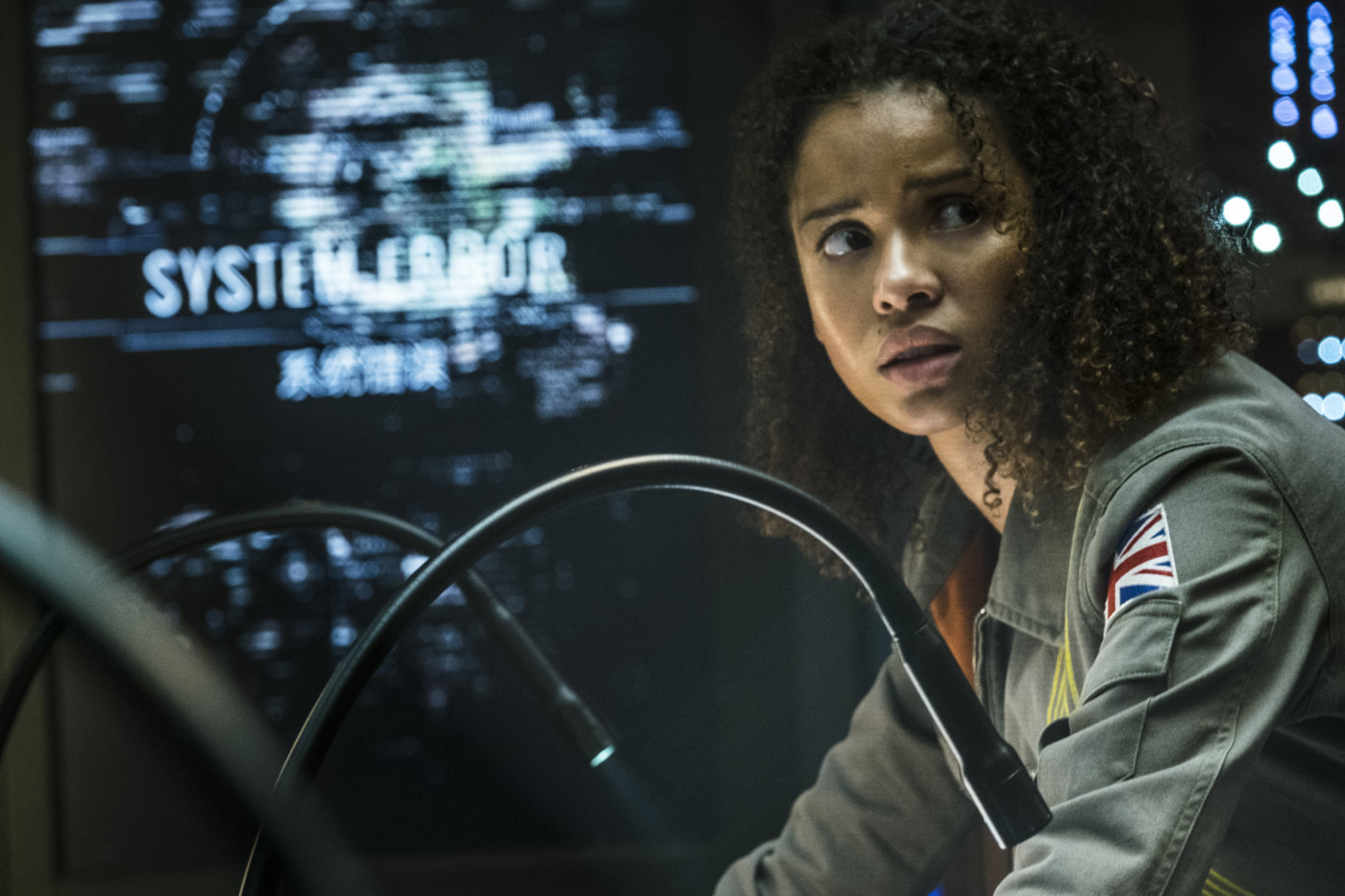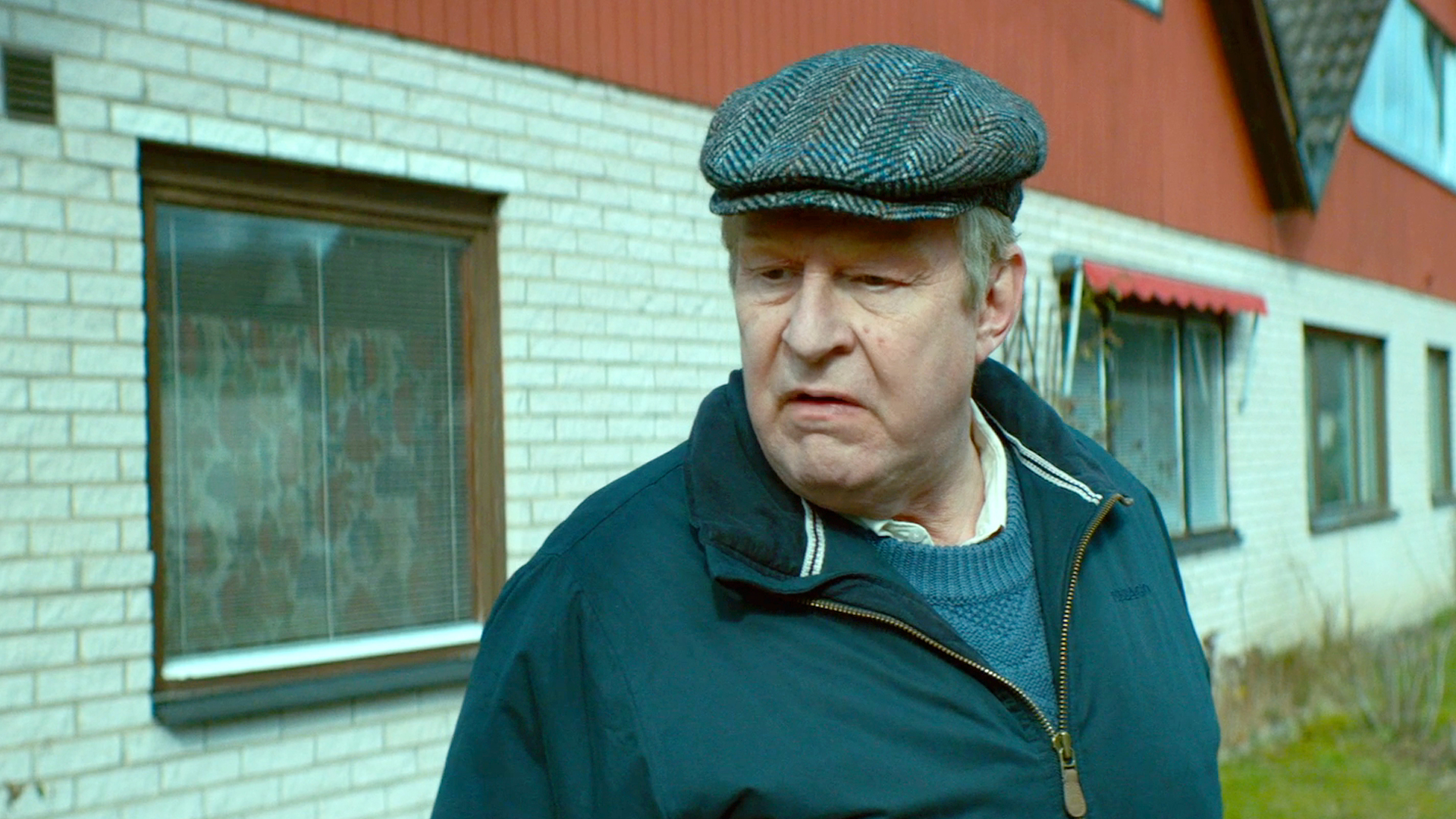“We lost the Earth.” This was actual dialogue. Umm, OK. Well, where was the last place you put it? Do you remember going out with the Earth today? Let’s try an exercise –where’s the last place you remember Earth being? Yeah, I can’t entirely hate a sci-fi movie where the science was quite clearly written by a child.
For that matter, I also can’t hate a movie in which a disembodied arm writes instructions. Useful instructions, no less. Say, dudes and dudettes, your space station is having some pretty serious issues. Have you tought of putting the disembodied arm in charge? It seems to know what it’s doing.
I’m getting ahead of myself. Netflix continues to be a bottomless source of “entertainment” in my life, which is to say often it gives me something to write about, and Netflix original The Cloverfield Paradox is no exception. It’s the year 2028 and global energy consumption has hit critical levels. The world will be at war soon if we can’t figure out where all the oil went. Earth’s last hope is for a team of international “scientists” to do energy experiments in space until the crisis is solved.
I’m not kidding. That’s the actual plot. Why can’t these experiments be done on the Earth? Too dangerous. Seriously. Yeah, a dozen nations are blowing up atoms in underground bunkers, but designing the ultimate windmill is too dangerous for planet Earth. So Gugu Mbatha-Raw, David Oyelowo, Daniel Brühl, John Ortiz, Chris O’Dowd, Aksel Hennie, and Ziyi Zhang all have to solve problems and play nice on Earth Saver I (a.k.a the “Cloverfield,” in case you need a titular tie in) for a few years. I marvel at the imagination that came up with “Chris O’Dowd, astronaut.” I’ll say this much; that casting decision makes equally as much sense as the science in the film.
Speaking of which, rarely will you find a more condescending computer display system. The readouts may as well read “GOOD” and “BAD.” Oh, gosh, I didn’t know what that 27.6 degree angle meant; I’m so glad the computer was able to interpret it for me in bright red flashing letters. I’ll give The Cloverfield Paradox this much – it tried to be less confusing. Almost. Sort of.
Down to their last attempts, the energy experiment “succeeds,” which in this case means the plot advances. What actually happens is Hell-on-not-Earth. The scientific impossibility of getting more energy out than you put in does occur, but it slaps the station around until we lose Earth and magically gain  a new crew member (Elizabeth Debicki). The crew discovers her wedged in a circuit board merged with several conduits. “She’s more machine than (wo)man…” In case anybody is still buying the plot at this point, I haven’t yet gotten to the disembodied arm yet.
a new crew member (Elizabeth Debicki). The crew discovers her wedged in a circuit board merged with several conduits. “She’s more machine than (wo)man…” In case anybody is still buying the plot at this point, I haven’t yet gotten to the disembodied arm yet.
And what does this plot have to do with Cloverfield or 10 Cloverfield Lane? Nothing. Not one single thing. I suppose I could qualify that, but I’m not going to. The original Cloverfield was a hand-held movie about monsters attacking NYC. 10 Cloverfield Lane? Bunker buddy activity while monsters attack NYC. The Cloverfield Paradox? Bad science in space. I can totally see the resemblance. This is the kind of film so poorly put together that it deserves a complete fail, but I found it silly enough not to go there and, truth be told, I found Cloverfield Paradox mildly more entertaining than Life. Somehow that’s fitting, no? Bad science: more entertaining than Life itself.
♪ In the not-too-distant future
Before World War III
There was an oil crisis
Far as the eye can see
They worked for solutions on our planet Earth
While every human dweller ran out of mirth
Their experiments proved dodgy for this place
So they got a bunch of quacks
And they shot ‘em into space♫
Rated TV-MA, 102 Minutes
Director: Julius Onah
Writer: Oren Uziel
Genre: Our screwed future
Type of being most likely to enjoy this film: Producers of the original Cloverfield
Type of being least likely to enjoy this film: Scientists
♪ Parody Inspired by “The Theme Song to Mystery Science Theater 3000”



